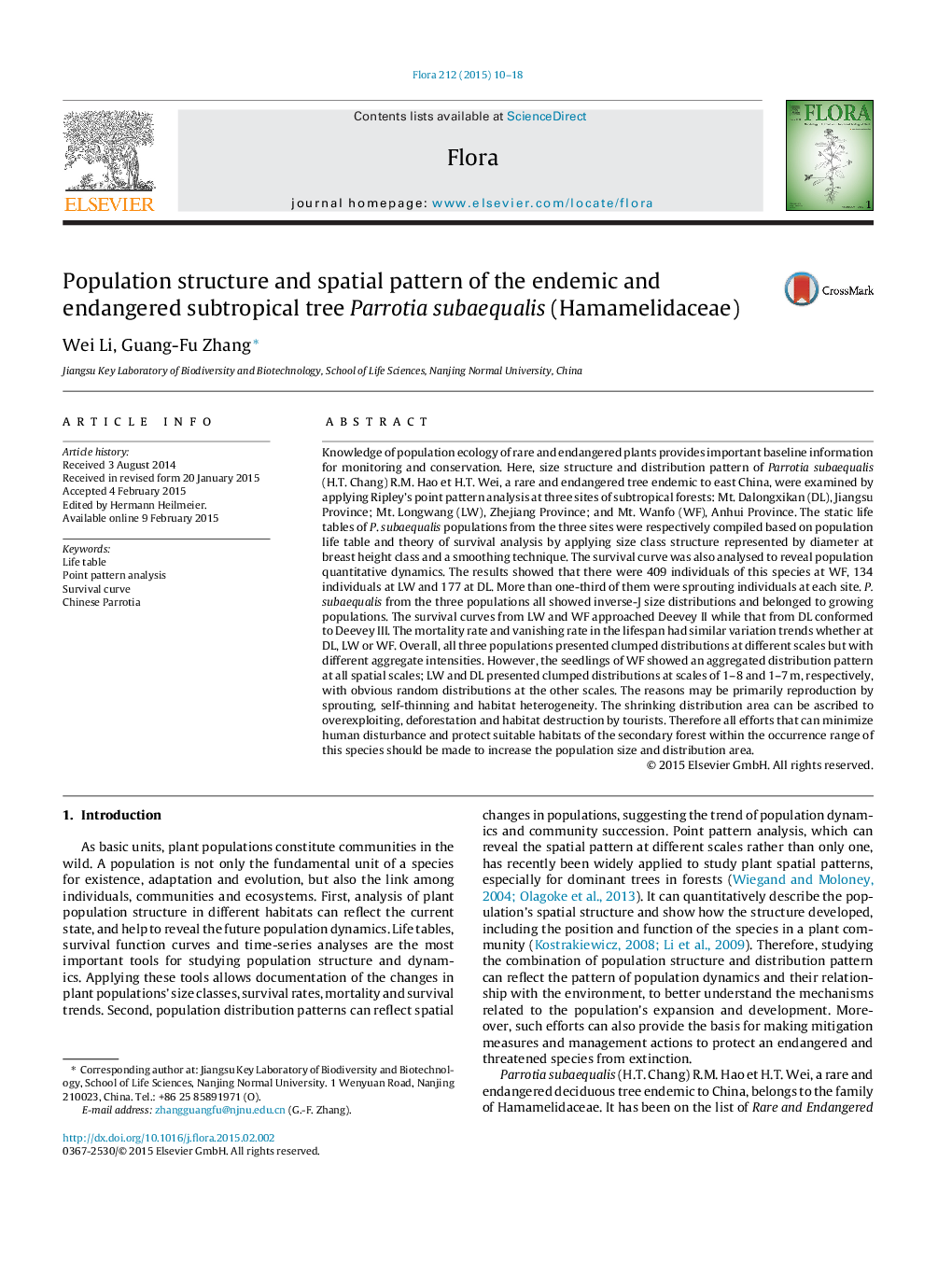| کد مقاله | کد نشریه | سال انتشار | مقاله انگلیسی | نسخه تمام متن |
|---|---|---|---|---|
| 2179450 | 1549947 | 2015 | 9 صفحه PDF | دانلود رایگان |
عنوان انگلیسی مقاله ISI
Population structure and spatial pattern of the endemic and endangered subtropical tree Parrotia subaequalis (Hamamelidaceae)
دانلود مقاله + سفارش ترجمه
دانلود مقاله ISI انگلیسی
رایگان برای ایرانیان
کلمات کلیدی
موضوعات مرتبط
علوم زیستی و بیوفناوری
علوم کشاورزی و بیولوژیک
بوم شناسی، تکامل، رفتار و سامانه شناسی
پیش نمایش صفحه اول مقاله

چکیده انگلیسی
Knowledge of population ecology of rare and endangered plants provides important baseline information for monitoring and conservation. Here, size structure and distribution pattern of Parrotia subaequalis (H.T. Chang) R.M. Hao et H.T. Wei, a rare and endangered tree endemic to east China, were examined by applying Ripley's point pattern analysis at three sites of subtropical forests: Mt. Dalongxikan (DL), Jiangsu Province; Mt. Longwang (LW), Zhejiang Province; and Mt. Wanfo (WF), Anhui Province. The static life tables of P. subaequalis populations from the three sites were respectively compiled based on population life table and theory of survival analysis by applying size class structure represented by diameter at breast height class and a smoothing technique. The survival curve was also analysed to reveal population quantitative dynamics. The results showed that there were 409 individuals of this species at WF, 134 individuals at LW and 177 at DL. More than one-third of them were sprouting individuals at each site. P. subaequalis from the three populations all showed inverse-J size distributions and belonged to growing populations. The survival curves from LW and WF approached Deevey II while that from DL conformed to Deevey III. The mortality rate and vanishing rate in the lifespan had similar variation trends whether at DL, LW or WF. Overall, all three populations presented clumped distributions at different scales but with different aggregate intensities. However, the seedlings of WF showed an aggregated distribution pattern at all spatial scales; LW and DL presented clumped distributions at scales of 1-8 and 1-7Â m, respectively, with obvious random distributions at the other scales. The reasons may be primarily reproduction by sprouting, self-thinning and habitat heterogeneity. The shrinking distribution area can be ascribed to overexploiting, deforestation and habitat destruction by tourists. Therefore all efforts that can minimize human disturbance and protect suitable habitats of the secondary forest within the occurrence range of this species should be made to increase the population size and distribution area.
ناشر
Database: Elsevier - ScienceDirect (ساینس دایرکت)
Journal: Flora - Morphology, Distribution, Functional Ecology of Plants - Volume 212, March 2015, Pages 10-18
Journal: Flora - Morphology, Distribution, Functional Ecology of Plants - Volume 212, March 2015, Pages 10-18
نویسندگان
Wei Li, Guang-Fu Zhang,